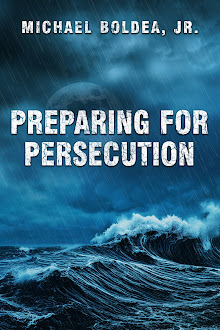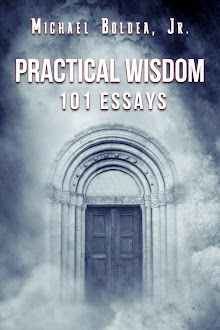Somewhere in the south of France, an art gallery put on an exhibit by a little-known artist and invited art critics, reporters, and potential buyers to attend the function. Many attended, the artist among them, but as yet, he’d not been introduced, nor did anyone present other than the gallery owner know what he looked like.
There were many fine works on display, but one stood out. The
painting was of a woman sitting in a rowboat in the middle of a placid lake,
wearing a sun bonnet and holding a lace umbrella. As they wandered from
painting to painting, giving their assessment, two critics stopped before one
of the women, and each offered their interpretation of what they thought the
painting meant. One said it was an expression of the loneliness of life, how
we’re all alone floating on the waters of life, with no one to help us row. At
the same time, the other insisted it was a representation of the value of
solitude and how the lone woman in the middle of the lake represented the
lengths to which someone would go to find it.
The artist stood to the side, overhearing the conversation,
until one of the critics turned to him and asked, “What do you think it
represents, sir? Which of us do you think is right?”
“Neither,” the artist answered. “It is a woman in a boat, on
a lake, dressed in her Sunday best.”
Indignant, the critic who’d asked for his opinion pursed his
lips and retorted, “What do you know? You are no art critic. How can you be so
certain of your opinion?”
“Because the woman in the boat is my wife, and I painted this
painting on a Sunday afternoon as she rowed out onto the lake behind our
cottage,” the artist answered calmly.
What’s the point of this story, you might ask? The point is
as simple as it is profound. There are things people say about what Jesus said;
then there are the things that Jesus said. Always trust the artist. Always
trust Christ’s words over the words of men, trying to twist His words to make
them fit their worldview. If you can’t trust Jesus, then there’s nobody you can
trust, so the first task we must tackle is to see what Jesus said the world
would look like in the last days.
If you’ve ever played the game telephone as a child, you
understand that if enough people, even with the best of intentions, repeat what
the first person said, eventually, you’ll get an entirely different message by
the time it makes its way down the line. The message might start off as the ‘sun
is shiny’ and end up with ‘your mom’s smelly.’ It's totally different than the
genesis of the message, isn’t it?
We must also consider that not all who attempt to pass on
Jesus's message do so with the best intentions. Many have a pre-established
worldview, see the future through the prism of how they’d like it to play out,
and twist and refashion the words of Christ to fit their conclusions. In such
cases, when you dare to point out what Jesus actually said, they get defensive and
proceed with ad hominem attacks because they can’t defend their position.
Did you go to seminary? Did you take an advanced course in
eschatology? No, but I know how to read, and I’m not pompous enough to put
words in Christ’s mouth that He never spoke or created doctrines out of whole
cloth just because they fit a particular narrative.
As the main body text for the events leading up to the end of
the world, we will use the words of Jesus and then supplement those scriptures
with various other insights written by Paul, Peter, and John.
It would be arrogant to say that the key to unlocking the
mysteries of the last days lies in interpreting scripture with scripture
because it’s not a mystery. The text is plainly written and readily understood
if we are willing to accept it at face value.
God's Word isn’t trying to be vague, mysterious, or
confusing. It becomes all those things, however, when men take it upon
themselves to insist that it means something other than what it says. We must
choose to either believe the art critics as to what they interpret the masterpiece
to be or take the artist’s word for it.
It is also wise to consider the individual character,
personality, temperament, and makeup of the men who wrote the firsthand accounts
of what Jesus said. When we come to Jesus, our personalities, how we think
about things, and how we assess them don’t get wiped clean. We don’t revert to
factory settings, no longer employing the natural gifting and ability with
which we were endowed.
Although Matthew 24 and Luke 21 describe the same Olivet Discourse
and are identical in substance, they differ in style because of the men who
wrote them.
Matthew was a tax collector before Jesus called him. He was a
numbers guy. He was the man with the pocket protector and abacus under his arm,
a column A and B sort of individual. Numbers are not given to poetic license or
inventive interpretation. The numbers have to make sense; they have to add up, and
that’s that.
Luke was a physician. His mind worked differently than Matthew's.
Luke’s vocation was to tease out an individual's symptoms so he could draw a
correct conclusion about the underlying disease.
I understand this difference in mindset all too well because
I see it in my little brother Daniel and myself. He’s the Matthew to my Luke.
He’s comfortable with numbers and likes spending time pouring over them, while
I would rather have a group of blindfolded kids swing at me with wiffle ball
bats as though I were a piñata.
Words are my comfort zone, the environment where I’m most
comfortable, and it’s often, I find myself meditating on a verse or a passage
of scripture for an hour or two, not realizing how much time has passed until I
see my wife’s hand waving in front of my face trying to get my attention.
I’ve said that to say this: Although Matthew’s retelling of the Olivet discourse is more detailed, Luke does a far better job of separating two events that would take place millennia apart. It’s not that one did a better job than the other; rather, the nature of their vocations in life determined how they retold the event.
With love in Christ,
Michael Boldea, Jr.















No comments:
Post a Comment